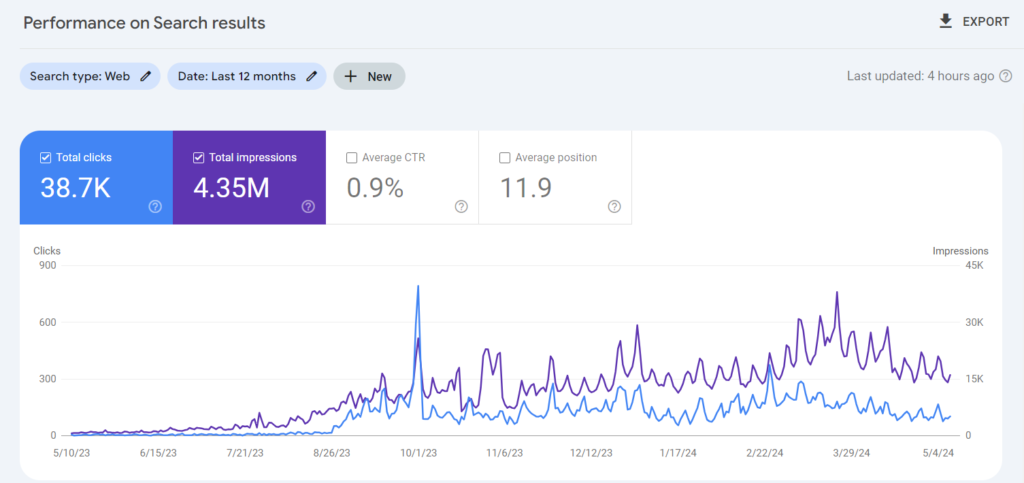Google’s search engine algorithms have evolved significantly over the years to provide more accurate and relevant search results. These updates, often named after animals, numbers, or themes, have aimed to tackle various issues such as spam, low-quality content, and to enhance user experience. Understanding these updates is crucial for anyone involved in digital marketing and SEO outsourcing. Here, we present a comprehensive list of major Google algorithm updates that have shaped the way search results are ranked.
Early Google Algorithm Updates
Florida Update (November 2003)
The Florida Update was one of Google’s first significant algorithm changes. It aimed to combat manipulative SEO practices like keyword stuffing and link farms, which were prevalent at the time. This update marked the beginning of Google’s efforts to prioritize user experience over manipulative SEO tactics.
Jagger Update (September-November 2005)
The Jagger Update focused on eliminating low-quality backlinks and over-optimized anchor text links. It also improved how Google indexed websites, making it harder for webmasters to use black hat SEO techniques.
Major Algorithm Updates in the 2010s
Panda Update (February 2011)
The Panda Update targeted content farms and sites with low-quality content. Websites with thin, duplicate, or plagiarized content saw a significant drop in their search rankings. The goal was to reward high-quality, original content and penalize sites with little to no value to users.
Penguin Update (April 2012)
Penguin focused on identifying and penalizing websites using black hat SEO techniques, such as keyword stuffing and spammy link building. Sites with unnatural link profiles experienced significant ranking drops. This update emphasized the importance of natural, high-quality backlinks.
Hummingbird Update (August 2013)
The Hummingbird Update was a major overhaul of Google’s core algorithm. It aimed to understand the intent behind a user’s query better, improving the way Google interpreted and responded to complex search queries. This update laid the groundwork for semantic search and the rise of voice search.
Pigeon Update (July 2014)
The Pigeon Update improved local search results by integrating more traditional web search ranking signals. This update enhanced Google’s ability to provide relevant and accurate local results, affecting both the local search results and Google’s map search.
Mobilegeddon (April 2015)
Mobilegeddon, officially known as the Mobile-Friendly Update, prioritized mobile-friendly websites in search results. As more users accessed the web via mobile devices, Google wanted to ensure that its search results catered to mobile user experience. Websites that were not mobile-friendly saw a significant drop in their rankings.
RankBrain (October 2015)
RankBrain is a machine learning-based component of Google’s algorithm. It helps Google process search results and provide more relevant responses to queries, especially those that are complex or have never been seen before. RankBrain continuously learns and adapts to deliver better search results over time.
Possum Update (September 2016)
The Possum Update aimed to diversify local search results and prevent spam from ranking in local queries. It filtered out duplicate business listings and ensured that the physical location of the searcher had a more significant impact on the search results.
Fred Update (March 2017)
The Fred Update targeted sites with low-quality content that seemed to prioritize revenue generation over user experience. Sites filled with ads and affiliate links, offering little value to users, were heavily penalized.
BERT Update (October 2019)
The BERT Update (Bidirectional Encoder Representations from Transformers) was a significant advancement in Google’s ability to understand natural language. BERT helped Google understand the context of words in a search query, leading to more accurate and relevant search results.
Algorithm Updates in the 2020s
Core Web Vitals Update (June 2021)
The Core Web Vitals Update focused on user experience metrics, such as page load time, interactivity, and visual stability. Google began using these metrics as ranking factors, encouraging webmasters to improve their website’s overall user experience.
Page Experience Update (August 2021)
The Page Experience Update incorporated the Core Web Vitals metrics and other UX-related factors like mobile-friendliness, safe browsing, HTTPS security, and intrusive interstitials. This update aimed to provide users with a more enjoyable and secure browsing experience.
Product Reviews Update (April 2021)
This update aimed to reward high-quality product reviews that provide insightful analysis and original research. It targeted sites with thin or superficial reviews, ensuring that more comprehensive and helpful product reviews ranked higher.
Core Update (March 2022)
The March 2022 Core Update was a broad and impactful update affecting all types of websites. Google’s core updates aim to improve the overall search experience by reassessing the relevance and quality of the content indexed.
Helpful Content Update (September 2023)
The September 2023 Helpful Content Update aimed to further reduce low-quality content from ranking highly in search results. This update targeted content that fails to meet user needs or appears to be created primarily for search engine ranking rather than providing real value.
Broad Core Update (February 2024)
Google released another broad core update in February 2024, aiming to refine search result accuracy and relevance further. This update impacted various industries, with noticeable shifts in search rankings across numerous websites.
Content Quality Update (August 2024)
The August 2024 Content Quality Update continued Google’s trend of refining content evaluation processes. This update aimed to identify and reward high-quality, original content while demoting low-quality or spammy content.
Understanding and Navigating Google Algorithm Updates
Staying informed about Google algorithm updates is crucial for maintaining and improving your website’s search rankings. Businesses and website owners should consider SEO outsourcing to stay ahead of these changes and ensure their SEO strategies align with Google’s latest guidelines.
Responding to a Google Penalty
If your website is hit by a Google penalty, swift action is necessary. Understanding the cause of the penalty is the first step towards Google penalty recovery. This process often involves identifying and fixing issues such as unnatural backlinks, low-quality content, or poor user experience.
Conclusion
Google algorithm updates play a critical role in shaping the digital landscape. By understanding and adapting to these updates, businesses can ensure they remain competitive in search engine rankings. Whether it’s through improving content quality, enhancing user experience, or staying up-to-date with SEO best practices, keeping pace with Google’s evolving algorithms is essential for long-term online success.







